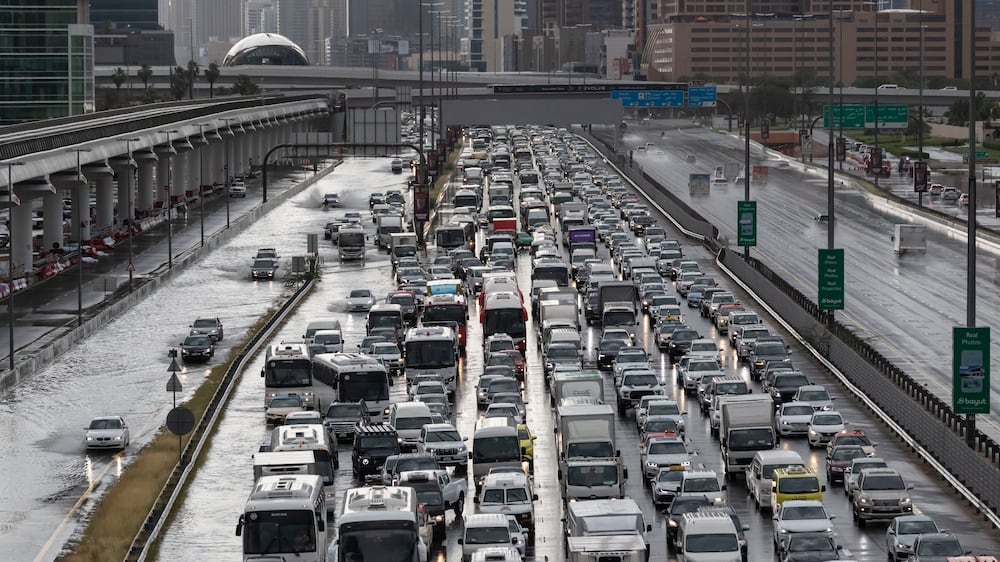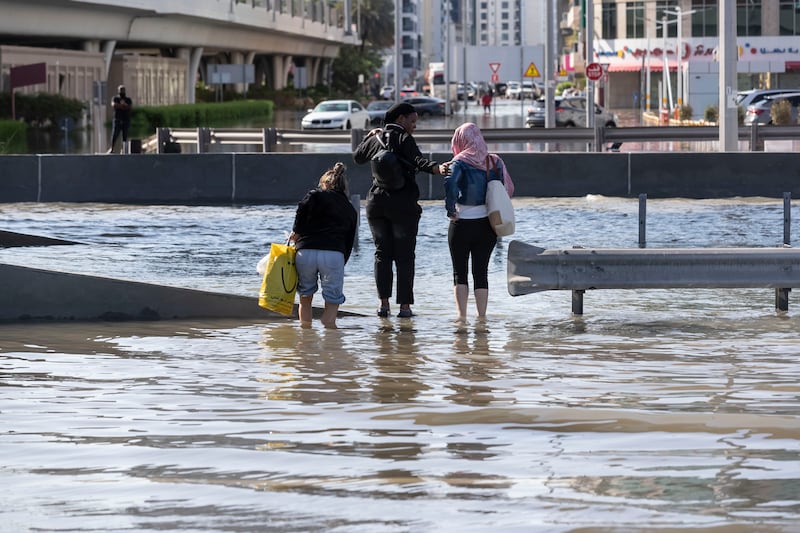The violent storms and torrential rain that lashed the UAE and neighbouring countries this week have been a sobering reminder not only of the power of nature, but of the effect humanity is having on the planet’s climate. Although life in the Emirates was disrupted as roads were submerged, schools shut their doors and many employees were unable to get to work, it was Oman that bore the brunt of the extreme weather, losing 18 people who found themselves trapped in wadis that quickly flooded.
Sadly, it is not the first time the Middle East and North Africa has been struck by such extreme rainfall: last year, more than 5,000 people lost their lives when Storm Daniel dropped more than 400mm of rain on north-east Libya in less than 24 hours. The divided country’s many difficulties left it woefully unprepared for such a crisis, raising the question: how can nations in this region climate-proof their futures?
UAE records heaviest rainfall in 75 years

The UAE has a good track record of preparedness. In 2017, it invested in the creation of a National Early Warning System in line with a strategic plan development by the National Emergency Crisis and Disasters Management Authority. This brought together government agencies and telecoms companies to develop an alert system for incidents just like extreme weather. Even so, this week’s storm cost one life, caused damage to property and had an international ripple effect as Dubai International Airport, the world’s busiest, was forced to suspend operations. This highlights the fact that adapting to climate change is a continuing challenge.
It is a challenge that must be met, because such violent weather seems set to stay. The World Meteorological Organisation says every 1°C degree of global warming is projected to cause a 7 per cent increase in extreme daily rainfall. And there should be no doubt that humanity is fuelling this threat: the Intergovernmental Panel on Climate Change (IPCC)’s Sixth Assessment Report released in 2021, said human-caused rise in greenhouse gases has increased the frequency and intensity of extreme weather events.
Given the population growth and urbanisation that is taking place in many parts of Gulf and wider Middle East, this week’s floods further highlight the need to take a long-term view of preparing their urban centres. Some cities face a problem in finding ways for floodwater to dissipate. The scale of this task is more daunting that it appears even at first glance, because such changes involve changing the urban environment of a region that for as long as it has been inhabited, has experienced little but heat and sand. In addition, not all countries have the resources to prioritise this preparation.
Indeed, deciding whether to engage in such forward planning is often an unappetizing choice for decision-makers. Updating and improving building design, road construction, airport operations and other critical infrastructure is expensive, and it may only have to prove its worth once or twice a year. But there is no way around this - even if climate targets are met, extreme rain and floods will be with us for the foreseeable future.
But it is not just governments that have a role to play in climate-proofing the future. We as individuals must think about what kind of cities and towns we will want to live in, in the years to come. There is also the issue of personal responsibility: the authorities can prepare and warn but the responsibility for our personal safety and for protecting our loved ones and property by making the right decisions, including having the right insurance, is primarily down to us.
It would be tempting to chalk down this week’s storms and floods as a once in a generation event. Sadly, the science proves that this kind of weather is becoming the new norm. The work to adapt and prepare for this new reality will continue long after this week’s clean-up operation is over.





